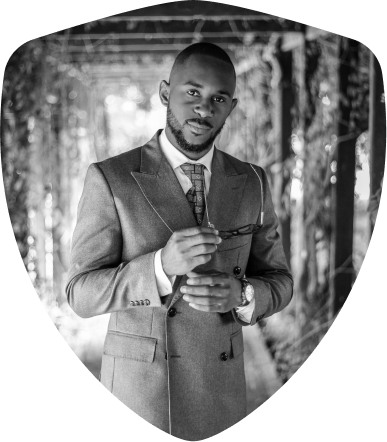What Should I Include In My Cover Letter for a Remote Job?
The Essential Cover Letter Tips and Inclusions For Remote Work
The remote job market can feel like an expedition into uncharted territory, especially when it comes to drafting the perfect cover letter. This crucial document is more than just an accessory to your resume—it's a personalized introduction, a strategic pitch that showcases your fit for the remote role you're eyeing.
In the dynamic world of remote work, your cover letter is a unique opportunity to communicate not just your qualifications but your ability to thrive in a virtual environment. Wondering what elements make a cover letter stand out to remote employers? Stay tuned as we delve into the essential ingredients of a compelling cover letter tailored for the remote job landscape, offering insights and a blueprint to elevate your application from the crowd.

Why Do Cover Letters Matter?
Cover letters play a pivotal role in the remote job application process, serving as a personalized introduction to potential employers. Unlike a resume or CV that outlines your professional history and accomplishments, a cover letter provides a unique opportunity to express your enthusiasm for the role, convey your personality, and detail why you're the ideal fit for the position. It's your chance to narrate your professional story, highlight key achievements relevant to the job, and demonstrate your communication skills.
Crafting a thoughtful and well-written cover letter can set you apart from other candidates and help beat applicant tracking systems (ATS), making a compelling case for why you should be considered for an interview. In a competitive job market, taking time to personalize your cover letter for each application shows a genuine interest in the role and can significantly increase the likelihood of your resume being reviewed by hiring managers.
What Should I Include In My Cover Letter
Creating an impactful cover letter for a remote job requires more than just summarizing your resume. It's about making a meaningful connection with the hiring team by showcasing your personality, demonstrating your communication skills, and explaining why you're the perfect fit for the role.
In this section, we'll break down the essential elements that make up a standout cover letter, ensuring you leave a lasting impression on potential employers.
1. A Marketable Cover Letter Header
When diving into the remote job market, your cover letter is your handshake, your first impression, and believe it or not, it starts at the very top—with the header. This isn't just about slapping your name and contact info at the document's crest; it's about creating a bridge between you and the person on the other side of that application. So, how do we construct this bridge to ensure it's strong, stands out, and gets you to the right destination? Let’s unpack this.
Your cover letter's header is more than a mere formality; it's the beacon that guides your application to the hiring manager's desk. Here’s what it needs to illuminate:
- Your Identity: Start with your full name and, if you choose, your preferred pronouns. It’s about clarity and respect from the get-go.
- Where You’re From: No need to detail your full address. A nod to your state or country, perhaps even your time zone, suffices and speaks to your remote readiness.
- How to Reach You: Provide your phone number (yes, with the country code) and a professional email. Think: simplicity meets professionalism.
- Your Digital Footprint: Link to your LinkedIn, a portfolio, or other professional sites. It’s the era of digital presence, after all.
- What You Do: Mention your current job title or a tagline that captures your essence. It’s your mini-pitch.
But it's not just about you. The header also needs to reach out, specifically to the person destined to read your letter:
- The Right Name: Skip the generic and aim for the specific. A bit of research can unveil the name of the hiring manager or department head. It shows effort and genuine interest.
- Their Territory: Adding the company’s details, including address and contact number, personalizes your application and demonstrates attention to detail.
In essence, your header is not just a formality—it’s the first step in your journey to connect with your future employer. It sets the stage, shows you’ve done your homework, and personalizes an otherwise sterile process. Remember, in the remote job hunt, details matter, and it all starts at the top.
2. Writing an Introduction That Opens Doors
Let's face it, the opening of your cover letter is like the opening scene of a movie. It sets the tone, grabs your attention, and decides whether you're in for the ride or checking out before the plot even thickens. So, how do you craft an intro that not only catches the eye but also swings the doors wide open to your next big opportunity?
The trick lies in connecting with your reader right off the bat. This isn't just about showcasing your enthusiasm for the role or dropping a fun fact about the company. It's about weaving a narrative that places you and the employer on the same page from the get-go. Here’s what every blockbuster intro includes:
- A Hook: Start with something memorable. This could be a unique insight into your professional ethos, a brief story of a past achievement, or why this company’s mission resonates with you personally.
- The Role: Clearly mention the job title you’re applying for. It shows you’re focused and applying with intention.
- The Discovery: Share how you came across the job opportunity. It could be through a specific event, a recommendation, or even your proactive search for companies that align with your values.
- Your Unique Offer: Highlight one key reason why you stand out as the ideal candidate for the role. Think about a specific skill, experience, or achievement that aligns with what the company is looking for.
Remember, your introduction is your chance to make a personal connection. It's about more than just stating facts; it's about telling a part of your story that resonates with the person on the other end. By focusing on what you bring to the table and how it benefits the company, you're not just applying for a job; you're opening a conversation about how you can contribute to shared goals and visions.
With a little thought and creativity, your cover letter's introduction can turn from a mere formality into a compelling prologue to your professional story. So take a moment to craft an opening that not only introduces you but also invites your reader to want to know more.

3. Showcase You're the Ideal Fit
Imagine you're having a conversation with the hiring manager, and they've just asked you, "Why should we pick you for this job?" Your cover letter is your moment to respond—not just with enthusiasm, but with proof. This is where you bridge the gap between your aspirations and their needs, turning your experiences into their solutions. It's not merely about listing your past jobs or skills; it's about highlighting the achievements that make you stand out as the perfect candidate.
Think of it as connecting the dots between what the job requires and what you've accomplished, using clear, compelling examples that resonate with the reader. For instance, if you've led projects that exceeded targets, mention the specifics—like leading a team that boosted sales by 30%, translating to increased revenue. Or, if you've innovated processes that saved time and resources, quantify those achievements. This section of your cover letter isn't just about what you've done; it's about how what you've done prepares you to excel in this new role.
And remember, keeping track of your professional wins makes this step easier, ensuring you're always ready to present your best self. By articulating your value in this personalized, data-driven way, you're not just a candidate; you're a solution to their needs.
4. Align With The Company's Culture
Ever wondered why some people just seem to fit perfectly into a company's ecosystem, almost as if they were meant to be there? That's the magic of company culture fit. It's not just about having the skills for the job but sharing a heartbeat with the organization. This part of your cover letter is your stage to sing in harmony with the company's mission, values, and aspirations. Dive deep into understanding what drives the company—their mission statement, their community involvement, their innovative products, or their journey from a humble beginning to industry leadership.
Reflect on how your personal values, passions, and past engagements echo these aspects. Maybe you're a long-time admirer of their groundbreaking solutions, or perhaps their commitment to social responsibility strikes a chord with you. This isn't about a checklist; it's about a connection. Sharing genuine stories or examples of how you live these values or have contributed to similar goals in the past makes your narrative compelling. It shows you're not just looking for any job—you're looking for this job, at this company, where you know you can belong and thrive.

5. Finish With a Lasting Impression
Imagine you're at the end of a compelling conversation about your dream job. You've shared your stories, your achievements, how much you resonate with the company's culture, and now, it's time to leave a lasting impression. The conclusion of your cover letter is that moment—your opportunity to wrap everything up with purpose and invite the next step. How do you ensure this parting note is as impactful as your opening? Here's the essence of a memorable sign-off:
- Summarize with Purpose: Briefly revisit any standout points that underscore why you're the ideal candidate. This isn't about new information, but reinforcing the value you bring.
- Call to Action: Here, you transition from being a storyteller to an initiator. A simple, respectful prompt encouraging the next step shows you're proactive and eager to move forward. Suggesting a follow-up meeting or expressing eagerness to discuss further in an interview are ways to do this gracefully.
- Professional Farewell: Your closing salutation is like the bow on a gift—it should be neat and fitting. Whether you choose "Sincerely," "Best regards," or another professional sign-off, make sure it aligns with the tone of your letter and leaves a polished impression.
Wrapping up your cover letter with a clear, direct call to action followed by a courteous and professional closing not only shows your respect for the reader's time but also your genuine interest in the position. It's your final chance to express your hope for a future conversation, making it clear you're ready and enthusiastic about the opportunity to contribute to their team. So, take a moment to craft this closing with the same care and attention you've given the rest of your letter. After all, in the journey of job applications, a thoughtful ending can be the beginning of something new and exciting.
What Should a Cover Letter Look Like?
If you're wondering what a cover letter should look like, you should first try searching for "Cover Letter Templates". If you're interested in writing a cover letter from scratch continue reading below:
Navigating Cover Letter Formatting
Think of your cover letter as your professional outfit—neat, tidy, and fitting perfectly. Just as you wouldn’t wear a swimsuit to a job interview, you wouldn’t want your cover letter to be a visual challenge for hiring managers. Here are the essentials for a letter that looks as good as it reads:
- Breathing Space: Start with 1-inch margins around your letter. This is like personal space—it makes everything more comfortable and accessible.
- Clear and Present Font: Use a 12 pt font size in a professional font style. Arial, Calibri, or Times New Roman are like the business attire of font choices—reliable and readable.
- Concise Language: Employ short sentences and active voice to keep your reader engaged. Action verbs are your friends; they make your achievements jump off the page.
- Structured Content: Organize your letter into 3 to 5 brief paragraphs. It's like planning the flow of a meeting—each part has a purpose, and none outstay their welcome.
- Word Economy: Aim for a sweet spot between 300 and 400 words. It's enough to tell your story without overstaying your welcome. Think of it as your elevator pitch—impactful and to the point.
With these guidelines, you're not just sending a cover letter; you're presenting a polished, professional snapshot of who you are and what you bring to the table. Remember, in the remote job application process, your cover letter is often the first glimpse a potential employer has of you. Make it count by ensuring it’s as pleasant to look at as it is to read.
Ready to Start Creating Your Cover Letter?
Now's the time to dive in and draft the cover letter that could open new doors for you in the remote working world. Remember, customizing your cover letter for each application is more than a task; it's your opportunity to shine in the digital job market. With the tips from our guide, you're all set to craft a compelling narrative that not only highlights your skills but also aligns with your dream company's culture.
And if you're looking for jobs and resources, Work Remote Now! has got you covered you every step of the way. So, why wait? Let's get started and move one step closer to landing your ideal remote job today.

